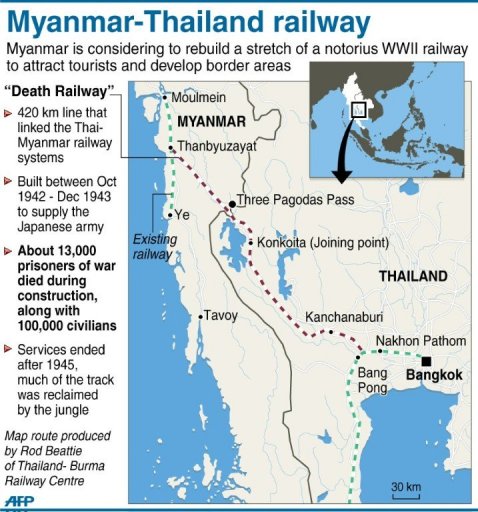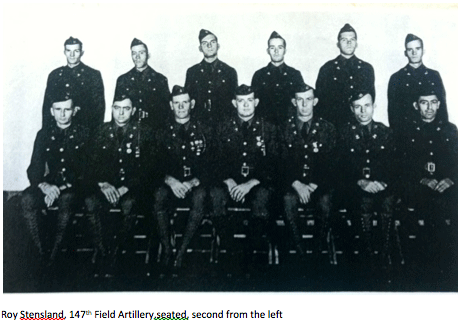WW2 South Dakota Soldier/POW: Three Years Building Siam-Burma Railroad for Japanese
 by Duke Doering
by Duke Doering
Only one member of the 147th Field Artillery [SDNG] became a prisoner of war (POW) during World War II, he was 2nd Lt. Roy Stensland from Sioux Falls, on January 13, 1942.
It was rather interesting how Stensland was put in a position to be captured by the Japanese. Col. Robensen was commander of the U.S. Army Base Section in Darwin, Australia, where the 147th Field Artillery was stationed in 1942 during the early part of the war.
After a very short time in Australia, Col. Robensen was relieved of command and sent on a special mission to the Dutch Indies to procure ships and small boats to run the blockade at Bataan in the Philippines. He selected six officers for this difficult mission, among them 2nd Lt. Roy Stensland, a former Master Sergeant with Headquarters Battery, and 2nd Lt. Paul M. Nestler, also of the 147th.
How Stensland became a POW is described on page 536 of the South Dakota Historical Collections:
“Coincident with the departure of Burnside and his men for Timor, the 147th saw the last of Colonel Robenson. He was relieved of his command, and directed to go to Java, with the mission of hiring blockade runners to carry supplies to MacArthur in the Philippines. He took with him, Lts. Stensland and Nestler of the 147th, and Lt. Cook of the 148th. Each had a pistol, a bolo and a satchel in which was some $250,000, the wherewithal to bribe ship captains to make the unescorted and suicidal run to the Philippines.
From all reports, the party made an earnest effort, but no ships could be hired. With the Pacific Fleet apparently reluctant to venture west of Pearl Harbor, it was asking a good deal of a slow moving, unarmed merchantman to venture into the jaws of the Japanese Navy and Air Force. This plan had all the earmarks of a scheme thought up in an office, far away from the realities of the war. Still, it was an effort to help Macarthur, and to that extent was commendable.
But no captain was going to risk himself and his ship on such a venture just for money, which is of little use to the dead. However, for his efforts, Colonel Robenson received the Distinguished Service Cross, and with Nestler and Cook, escaped on one of the last ships to get away from Java. His escape was regretted in some quarters. Instead of being evacuated with the others, Lt. Stensland was attached to the 131st Field Artillery, which had been elected to be the United States’ contribution to the debacle in the Malay Barrier. Stensland went with the 131st Field Artillery into captivity, and spent the next three years building the Siam-Burma Railway for the Japanese.”

 by Duke Doering
by Duke Doering
Roy Stensland was my Grandfather and I am grateful to see that his efforts and great sacrifices that were made at the hand of the Japanese are memorialized here.
Very interesting article, I would really like to get in touch with the author. I am doing some research on Nestler and this is new info to me! Thanks for posting.